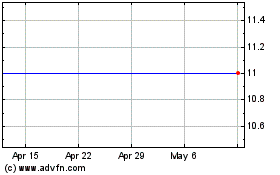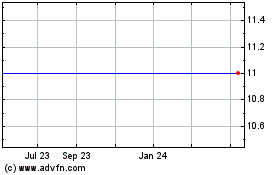Facing Backlog, US Oil And Gas Producers Building Service Sides
April 22 2011 - 1:09PM
Dow Jones News
The North American shale boom has led to months-long waiting
lines for scarce oilfield equipment like drilling rigs and pumping
trucks. As a result, companies like Chesapeake Energy Corp. (CHK)
are taking matters into their own hands.
Last week, Chesapeake announced that it will buy oilfield
equipment contractor Bronco Drilling Co. Inc. (BRNC) and its 22
rigs for $315 million. It badly needs them: Chesapeake is the most
active driller in the U.S., employing about 160 rigs with plans to
boost that to about 200 by year's end as it scrambles to meet
drilling obligations outlined in joint venture agreements and boost
its oil output amid high prices. The Oklahoma City company wants to
eventually own two-thirds of the rigs it has drilling and the
Bronco deal will push Chesapeake's fleet to 117.
Chesapeake isn't alone in its quest to supply its own services.
Those producers are signaling that "they believe the market in
North America for service equipment is going to remain tight for
the next several years and they're struggling to have access to
equipment," Barclays Capital analyst James West said.
There are 1,800 rigs drilling in the U.S. for oil and gas, up
21% from a year ago, according to oilfield service company Baker
Hughes Inc. (BHI). The rise has come as producers scramble to
unlock newly profitable reservoirs, including deeply buried shale
formations, that are more difficult to crack than conventional oil
wells.
In particular shale drilling, which requires millions of gallons
of water to be forced underground to fracture the rock formations,
has put a premium on pressure pumping services. Some producers now
wait as long as six months between the time they drill a well and
when the shale is hydraulically fractured.
This isn't the first time producers have owned rigs. Decades
ago, it used to be common practice, but in the 1980s they began
shedding them amid falling oil prices. Some analysts believe the
trend of buying rigs is a short-term fad limited to a few energy
producers.
Simmons & Co. analyst Bill Herbert said in a client note
that while Chesapeake's Bronco purchase shows that rig availability
is "perhaps becoming more of a choke-point than many realize,"
plenty of producers are "loathe" to enter the service business
because of "inefficiencies and questionable returns," Herbert
said.
At the same time, oilfield service companies are rushing to meet
the demands of energy producers. U.S. onshore drillers, for
instance, have 119 new rigs on order and are refurbishing older,
idled equipment to send back out into the oil patch, according to
Simmons & Co.
Yet some companies find cost savings in ownership of oilfield
equipment. Pioneer Natural Resources Co. (PXD) Chief Executive
Scott Sheffield said the Irving, Texas, company envisioned an
equipment backlog when it began building a hydraulic fracturing
business and later added 12 drilling rigs.
Those assets, Sheffield said in an interview, "helped us not
have the shortages that some of the other companies have." They've
also helped Pioneer trim about $500,000 from the price of each well
in the company's Spraberry field in west Texas where its drilling
rigs operate.
Clayton Williams Jr. said owning a fleet of 12 rigs gave his
eponymous oil company the ability to pounce on an offer from
Chesapeake this spring in which the larger company would give
Clayton Williams Energy Inc. (CWEI) a majority stake in some west
Texas oil fields if it drilled wells there. With its own fleet,
there was no need for lengthy negotiations with drilling
contractors, Williams said in an interview.
"I'm inclined to buy more rigs," he said. "It lets you control
your own destiny."
In the case of Chesapeake, that quest for control can take on a
life of its own. The company has built an oilfield trucking fleet
and other service subsidiaries that rank among the largest in their
sectors in the U.S. And Chief Executive Aubrey McClendon told
investors in New York recently that the company plans to add
considerable pressure pumping equipment to its holdings.
Eventually, McClendon said, Chesapeake may consolidate its
service subsidiaries and spin off what would be one of the largest
U.S. service companies.
-By Ryan Dezember, Dow Jones Newswires; 713-547-9208;
ryan.dezember@dowjones.com
Bronco Drilling Company, Inc. (MM) (NASDAQ:BRNC)
Historical Stock Chart
From Mar 2024 to Apr 2024

Bronco Drilling Company, Inc. (MM) (NASDAQ:BRNC)
Historical Stock Chart
From Apr 2023 to Apr 2024
